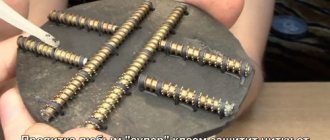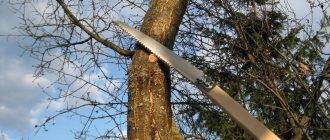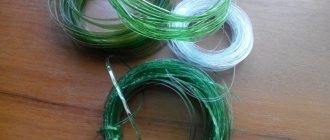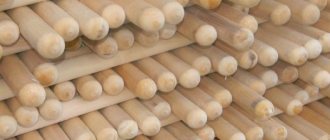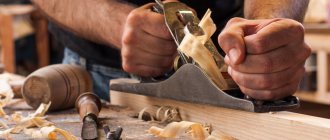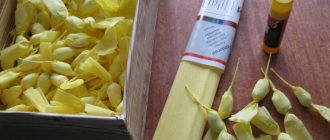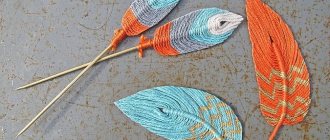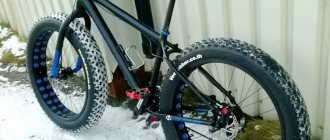The Russian housing construction market is again moving towards stable growth - and it seems that even the experiment with the introduction of escrow accounts will not significantly affect its development. Thanks to this, the production and sale of fastening materials is becoming an increasingly promising business area.
Self-tapping screws are used both by private individuals during repairs and by large construction organizations. The production of self-tapping screws is a profitable business idea, the implementation of which will allow the entrepreneur to receive a stable income.
1. Application of self-tapping screws 2. Production technology 3. Investments 4. Registration 5. Preparing the premises 6. Equipment 7. Raw materials 8. Personnel 9. Ways of implementation 10. Payback calculation
Use of self-tapping screws
The official name of the self-tapping screw is self-tapping screw element. The material has a high fastening ability (due to the thread), which determines its popularity in the construction industry. There are many types of self-tapping screws: they differ in material and features of the structural elements (head, slot, end).
| Thread pitch | Application area | Diameter, mm | Lengths, mm |
| Average | Universal, for different types of fastening | 3.0; 3.5; 4.0; 4.5; 5.0; 6.0 | 12; 16; 20; 25; 30; 35: 40; 45; 50: 60: 70: 80: 90:100:120:140; 160; 180; 200; 220 |
| Frequent, carving in 2 passes | Metal sheets up to 0.9 mm thick without dowels. You need to drill a hole first | 3.0; 3.5; 4.0; 4.5; 5.0; 6.0; 8.0 | 12 — 200 |
| Rare | Soft materials without dowels (wood, plastic, plaster) | M | 16 — 150 |
| Medium, herringbone profile | Concrete, brick, hammered into dowel | 3.0; 3.5; 4.0; 4.5; 5.0; 6.0; 8.0 | 12 — 200 |
| Asymmetric | Elements of modern wooden furniture. Chipboards, plywood. You need to drill a hole with a diameter of 4.5 or 7 mm. | 5.0; 7.5 | 40 — 70 |
| Variable with notch | Concrete, brick, without dowels (dowels). It is screwed into a hole 15 mm longer than the self-tapping screw. | 7.5 | 70 — 200 |
Self-tapping screws are used to work with:
- metal products;
- wood products;
- plasterboard sheets;
- sandwich panels;
- window profiles.
Differences between self-tapping screws for wood and metal
The main difference is the different pitch of thread knurling:
- for parts working with wood, this figure is higher. To be fixed in this material, characterized by a fibrous structure, a larger distance between the threads is quite enough;
- the distance between adjacent turns of the thread of self-tapping screws installed in metal is less. These fasteners may have a drill bit rather than a regular point. They are capable of drilling sockets in a metal plate up to 5 millimeters thick.
To prevent the edge of the self-tapping screw from sliding on the metal, the place where it is installed is punched with a hammer and a chipper - that is, a small recess is formed. It is by no means necessary to punch through the sheet. It is enough to ensure that the tip of the fastener goes deep into the dent.
Market situation
The self-tapping screw business is directly related to the construction sector, since its participants are the main consumers of screws.
Due to the difficult international situation and problems in the economic sphere (domestic and global), the last few years have been marked by a crisis in many industries in Russia, including construction.
Now the situation is returning to normal. The construction market fully recovered by the end of 2022. According to data for the first quarter of 2018, 19.6% more apartments were commissioned compared to the same period in 2022. During this period, 72.5% more residential buildings were commissioned. The general situation, the macroeconomic environment, indicates an increase in the consumption of building materials - that is, in favor of the business of producing self-tapping screws.
Production technology
The process of manufacturing self-tapping screws is automated. The equipment is responsible for the entire production process. The required raw material is steel wire (rolled metal).
Let us describe the process of manufacturing products using the cold stamping method:
- We make preparations. We cut pieces of equal length from rolled metal (blanks).
- We form the caps and apply the carvings. In fact, you get ready-made self-tapping screws.
- The products are placed in an oven, where they are hardened to increase their strength.
- We wash the screws to eliminate interference during further processing.
- We spray anti-corrosion coating on clean screws.
The finished product becomes highly durable, capable of withstanding the negative effects of the environment for a long time.
Correct selection of screws according to length
Different situations have their own selection rules. If you need to connect two not very massive components of the structure being created, then you need to be guided by the tips presented below.
- Regardless of the type of objects being connected, the pointed end of the self-tapping screw should not leave the body. In other words, the length of the fastener should not exceed the total thickness of the structural elements being fastened. In this case, maximum mating strength will be ensured if the distance of the tip of the screw from the edge of the lower object is at least 5 millimeters.
- The minimum insertion depth (denoted by the letter H) of the self-tapping screw into the lower component of the structure should be as follows: H≥T/3, where T is the thickness of the part being fixed. So, if a beam is attached, for example, 90×90, for this you need to use fasteners with a length of 90+90/3=120 mm.
Another rule must be followed if an object of small thickness is attached to a massive mounting base. Then the length of the self-tapping screw (denoted by the letter L) should be as follows: L≈(2.0…2.5)×T. This approach must be followed when attaching something to a concrete floor or to a load-bearing wall.
Investments
The main cost item for starting a business is the operating line for the production of screws, which operates automatically. Automation is more expensive, but more profitable in the long term. You don't have to hire a large staff.
| Expense item | Cost, rub. |
| Registration | 10 thousand |
| Premises for rent, 100 sq. m | 50 thousand |
| Equipment | 2 million |
| Raw materials, months norm | 150 thousand |
| Salary, 4 people. | 100 thousand |
| Additional expenses | 200 thousand |
| Total | 2.51 million |
The cost of renting premises is indicated subject to working in a city with a population of up to 500 thousand people. We rent premises that are ready for use and do not require major repairs. The costs of all preparatory work are included in additional costs.
Registration
A business producing self-tapping screws can be organized as an individual entrepreneur or a legal entity. However, LLC opens up great opportunities for selling products, allows you to increase sales, production capacity, and financial and economic indicators of the business.
Construction companies and large retail chains prefer to cooperate with legal entities. Working as an LLC, you can find regular large customers, develop stable sales channels and gain a foothold in the market.
An individual entrepreneur is much easier to register and maintain documentation.
Types of self-tapping screws: head and slot
Another criterion according to which these parts are divided into types is the type of cap. There are heads with a semi-cylindrical and hemispherical configuration - protruding -, recessed and semi-concealed heads. These connecting parts are also available on the market with a 6-sided head. With their help
fasten:
- sheathing on sheathing;
- material on the fencing structure;
set:
- thin plastic sheets - polycarbonate;
- corrugated sheeting and other roofing materials.
In general, self-tapping screws with a 6-sided head are used where it is necessary to ensure rigid fixation. When delivered, they are equipped with sealing washers equipped with rubber linings.
Fasteners with flush caps are completely recessed into the wood during installation. And so that such a head can be hidden in the installation material without additional drilling of a hole, notches are made on its supporting surface.
The slot is a recess on the head for the tip of the tool. It should be selected taking into account the available bits. Experienced home craftsmen prefer self-tapping screws with a Torx slot. The reason is that its configuration provides better transmission of torque. This is critical when the work involves hard material.
Preparing the premises
You need a room of about 100 square meters. m. There will be a production workshop with equipment, warehouses for raw materials and finished products, staff premises, and a place for loading/unloading goods.
The premises may be located on the outskirts of a populated area. It must be connected to the electrical network, a power cable (the equipment will consume a lot of energy), and must comply with fire and sanitary safety conditions and be connected to communications. An important condition is the availability of automobile access to the site.
Production premises should not be rented far from sales markets, since costs for fuel and fuels and lubricants increase unjustifiably. It is better to rent equipped empty space at a large enterprise.
Equipment
The operating line for the production of screws consists of several machines:
- Drawing machine.
- Cold heading unit.
- Thread rolling machine.
- Tempering furnace.
- Galvanic bath.
- Drying centrifuge.
The drawing machine draws the wire, heats it, and cuts the blanks of the required size and diameter. The point and heads of the screws are formed on a cold heading machine. A thread of the specified size is cut on a thread rolling machine. The self-tapping screws are hardened in a hardening furnace. In a galvanic bath, an anti-corrosion coating and zinc anode are applied to them. The finished screws are dried in a centrifuge. Next, it remains to check the quality of the output material and package it. The cost of such a line according to the terms of the business plan is 2 million rubles. Productivity 180-200 pcs./min.
What is a cold heading machine?
This equipment belongs to the group of machines:
- stationary mid-size;
- universal expressways;
- automated two-impact;
- continuous action.
Machines of this type can be used to produce not only self-tapping screws themselves, but also almost any other types of fasteners - bolts, screws, etc. In this case, everything depends on the settings of such equipment.
Cold heading machines are mounted on a rigid welded frame. The wire is fed to the main unit in them from the coil using a ratchet device step by step. The length of the workpiece in machines of this type is adjusted by moving the stop. Landing blows in the equipment are performed with a punch. The first blow drives the rod towards the stop, and the second blow forms the head.
It is therefore clear how self-tapping screws are made at enterprises. The technology for producing such fasteners is, in principle, not too complicated. At the same time, the cold heading machines themselves produce workpieces very quickly. Depending on performance and power indicators, one such unit can produce up to 100-300 screws per minute.
Raw materials
The starting material is steel or brass wire. The material must be selected based on the final purpose of the screws. For example, screws from:
- stainless steel - used when working with wood;
- high-carbon steel - used where a high hardness coefficient is needed;
- brass - for finishing work.
We deliver spools of rolled metal wire to production. It is easy to get it in Russia. One reel produces approximately half a million self-tapping screws. It is better to purchase it directly from the manufacturer at wholesale prices. This will reduce costs.
Main types of self-tapping slots
The following types of self-tapping screw slots exist:
- direct, the most traditional, but recently used less and less;
- cross-shaped Ph or H (Phillips) replaced the straight slot and significantly accelerated the screwing process;
- cruciform Pz or Z (Pozidrive), thanks to a smaller angle at the apex and an improved shape of the internal recess, is able to transmit more torque without breaking the tool;
- star-shaped Torx allows even greater forces, but is less convenient due to the complex shape of the tool;
- internal hexagon, used to a limited extent, in particular when assembling furniture on ties (the so-called “Confirmat”).
Staff
The advantage of automation is that you don't have to hire many workers. After delivery, the manufacturer performs the initial setup of the machines. The craftsmen are left to monitor their work and ensure the continuity of the production process.
No more than two or three people will be required per shift. They must undergo special training and be able to operate machines. They can also be storekeepers, deliver raw materials to the workshop, store finished products, and load them into vehicles.
You will also need a driver with a car, an accountant (can be hired through outsourcing), a sales representative who will negotiate with networks and construction companies (the entrepreneur himself can take on this work at first).
Self-tapping screws for polished soft metal and agglomerate
Such self-tapping screws have the property of being screwed in without preparing a hole. Pointed and threaded along the entire length, they do not damage the material when screwing.
They have a countersunk coated head and are made of bichromate (yellow screw), stainless steel or galvanized (silver).
Ways of implementation
It is recommended to use all possible implementation paths:
- enter into long-term contracts with construction companies;
- work with specialized organizations (for example, for the production of windows, doors, furniture);
- sell products to construction stores and networks;
- interact with private contractors.
Think over your pricing policy. Reasonably low prices for quality products are an obvious way to gain loyal customers. It is also recommended to think through various promotions that encourage customers to buy more and more often.
Develop an assortment. Start producing and selling several varieties of self-tapping screws, identify those that are in demand and focus on them. Nails and anchors can be produced as additional products.
Payback calculation
Let's calculate the payback and profitability according to the business plan for self-tapping screws:
- The amount of initial investment is 2.51 million rubles.
- The total amount of expenses per month is 350 thousand rubles.
- An operating line with a capacity of 180 - 200 screws per minute in 1 shift (8 hours) within 22 days (month) will produce 1.9 - 2.1 million pieces. self-tapping screws With an average price of 1 screw - 25 kopecks, monthly revenue will be 475 - 525 thousand rubles.
- Minus monthly costs, net profit is 125-175 thousand rubles.
- You can reach the break-even point in 15-20 months.
It will be possible to fully recoup the initial costs in about 1.5 years. Then the entrepreneur will begin to receive a stable high income. However, such a forecast will come true only with constant production and marketing of manufactured products.
With proper organization of the production process, you will be able to create a business as strong as the profiles assembled using your screws. The business plan for the production of self-tapping screws presented in the article will help you better understand the features of manufacturing fastening tools, we will tell you about the main stages of creating a mini plant and the nuances important for achieving success.

